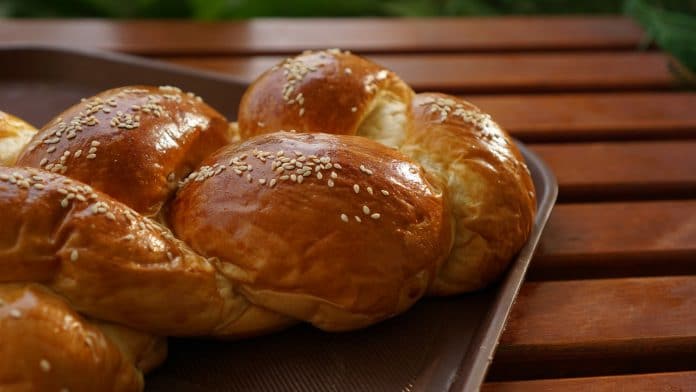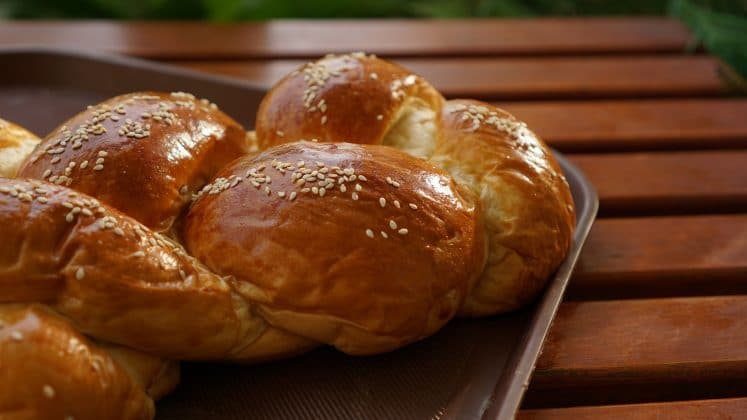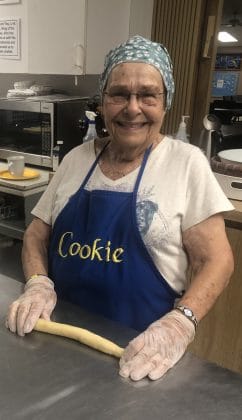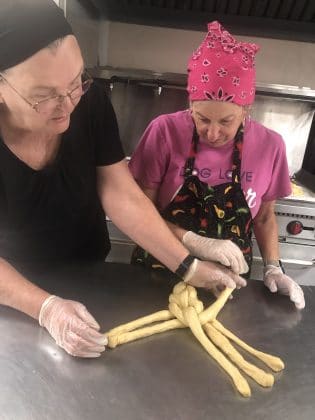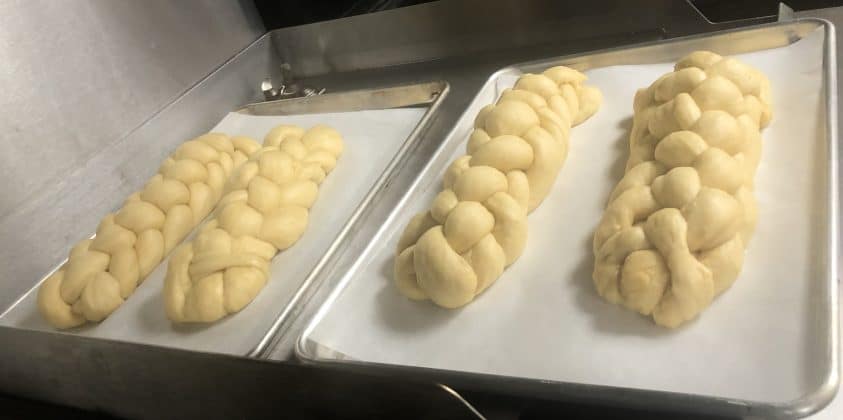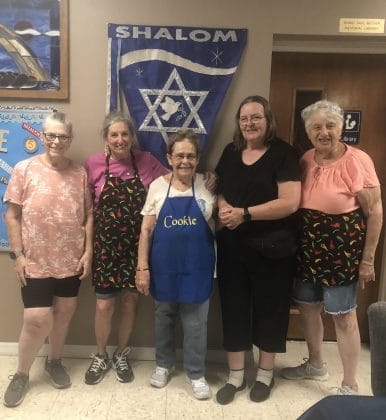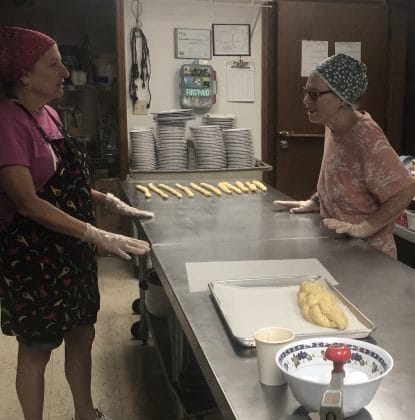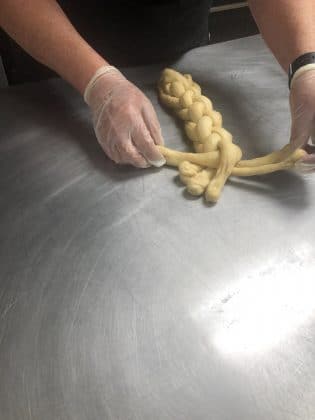A spiritually steeped activity, Temple Beth David members gather to bake challah bread for the Jewish Sabbath and upcoming holidays and festivals
Tucked away on a quiet street close to Spring Hill Drive is Temple Beth David, a Reform synagogue, with a vibrant congregation of about 120 families. The Temple’s spiritual leader is Rabbi Emanual Ben-David. The Temple has an active Sisterhood and Brotherhood as well as a variety of committees including cultural arts, caring, community outreach, and ritual. One such committee takes charge of baking those special foods celebrated at Jewish holidays and festivals.
Many holidays have specific foods that are associated with them such as Passover or potato pancakes on Chanukah. Foods like latkes, a potato pancake, rugelach, a buttery, light, and flaky croissant, sufganiyot, an Israeli doughnut, and hamantash, a triangular filled-pocket pastry, associated with the Jewish holiday of Purim. But it’s challah, a loaf made of braided dough ropes, that is everyone’s favorite and most in demand. “By baking together, we have grown to know each other much better,” said Jan Humphries, a Navy veteran and leader of the group. “That’s why we get together and bake challah regularly for our congregation.”
For Jewish women, making challah is a spiritually steeped activity dating back to the days of Sarah, one of the four matriarchs. A ceremonial bread, challah is eaten during the Jewish Sabbath — Friday night and all day Saturday — and on other holy days. For Sabbath dinner, there is a double loaf, which symbolizes the Israelites’ time in the desert.
“Making challah is a special mitzvah (a good deed performed out of religious duty) that allows us to weave a physical act like making bread with a spiritual experience,” said Mickie Fligleman, a longtime member of Temple Beth David. Originally from Brooklyn, New York. Mickie is also the director of the Temple’s fundraising committee.
Cookie Goodman of Spring Hill handles publicity for the Temple added, “People love eating challah which is pronounced ‘HAL-lah’ with a guttural sound on the first syllable. Cookie was an elementary school teacher for 30 years. She has 8 grandchildren and 4 great-grandchildren.
Lovingly known as “the Temple Beth David bodacious bakers,” Jan, Mickie, and Cookie, joined by Tina, Judy and Carla, readied to mix the challah dough in the Temple kitchen, now transformed into a bakery for the morning. On the stainless steel preparation table was everything needed to make the dough. Stainless steel mixing bowls, pastry brushes and pre-measured ingredients.
Soon the bakery was bustling with activity as the women mixed the dough for challah. The simple dough is made with eggs, flour, yeast, oil, honey and salt. The bread is pale yellow in color because so many eggs are used, and it has a rich flavor. Sometimes, challah recipes can include raisins, honey or seeds. “The recipe has been used for about 35 years, and we’re going to keep it a secret,” said Jan.
Each person added warm water to their yeast and waited for bubbles to appear. Once they were visible, the rest of the ingredients were added, starting with egg and oil followed by the salt and flour. When all the dough was prepared, the group covered the dough with tea cloths and allowed it to rest for a minimum of 30 minutes to allow it to rise to about double its size.
When the dough had risen, the women began to knead and shape the dough into strips which will form the loaves they plan to sell at Temple Beth David’s upcoming events. Each braid, sometimes called ropes, is precisely 4 ounces in weight. Mickie was in charge of measuring the dough into 4-ounce balls which were then rolled into strips about 10 inches long which were left again to rise. “Now the complicated bit happens,”said Tina. “We make six-braid loaves so it’s best to give your full attention when braiding or you may lose the rhythm.” Learning to braid challah takes time and practice, but the end result is a beautiful loaf worthy of any holiday celebration. Six-strand braids can be a little tricky, but the technique isn’t hard to master.
Tina and Carla carefully laid their six strips side by side and pinched them together at the top. The topmost right strip was placed to the opposite side. The second left topmost strip was then placed to the opposite side. The topmost left strand then goes in the middle. They repeated this until the strips were all braided. The loaves were then brushed amply with egg wash. This is when any toppings can be added like sesame or poppy seeds for instance. The loaves then went into the ovens for 25 to 35 minutes or until golden brown and sounds hollow when tapped on the bottom.
“Our bread has a soft fluffy inside with a shiny crust that’s not too chewy and not too soft,” added Carla. “And it can be used for other dishes such as French toast, bread pudding and turkey (or chicken) dressing. The French toast is particularly yummy.” For the less competent of us who want to try making Challah braided bread, there are lots of recipes and instructions to be found on the Internet. Challah bread is ideal for sandwiches, freezes well and can be saved for weeks.
Challah is available at many of the upcoming events held regularly at Temple Beth David. Check their website at tbdfl.org so you can sample this delicious bread. For more information about Temple Beth David, call (352) 686-7034.

